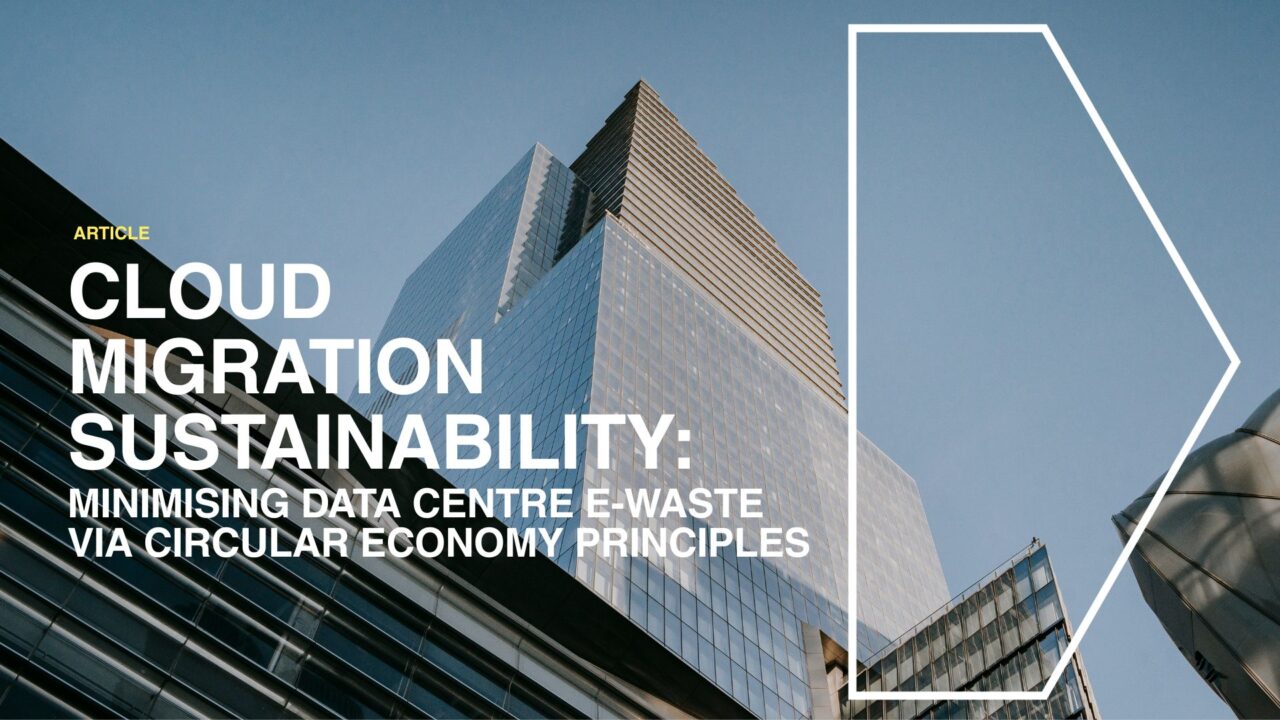As enterprises increasingly migrate to the cloud and decommission traditional, on-premise data centres, integrating Environmental, Social, and Governance (ESG) objectives into these projects is crucial.
One of the most effective strategies for achieving these goals is adopting the principles of the circular economy, which emphasises waste reduction while extending the lifecycle of resources. Minimising e-waste during cloud migration and data centre closures is a critical step in this direction, offering distinct environmental, economic, and social benefits.
Understanding the Circular Economy
The circular economy is a sustainable economic model designed to minimise waste and utilise existing resources. Unlike the traditional linear economy—where products are made, used, and disposed of—the circular economy focuses on keeping products, materials, and resources in use for as long as possible. This approach is based on three key principles:
· Designing out waste and pollution
· Keeping devices and materials in use
· Regenerating natural systems
The Impact of E-Waste in Cloud Migration
As cloud migration accelerates, organisations are decommissioning vast amounts of IT equipment such as servers, storage systems, and networking devices.
This poses a significant challenge for e-waste management, as improper disposal can lead to environmental and health risks. In 2022, over 62 million tonnes of e-waste were generated globally, with only 22.3% recycled. The remainder, containing toxic materials like lead, mercury, and cadmium, is often sent to landfills or informally handled, contaminating ecosystems.
Adopting circular economy principles offers a solution. By refurbishing and reusing IT assets, companies not only minimise their contribution to e-waste but also prevent the loss of US $91 billion worth of valuable materials annually. This approach enables organisations to reach ESG objectives, reducing waste and driving sustainability in cloud migration projects.
Environmental, Economic, and Social Benefits
Beyond minimising e-waste, implementing circular economy practices during cloud migration offers numerous advantages:
Environmental Impact: Reusing and recycling equipment conserves natural resources, reduces pollution, and lowers carbon emissions. Refurbishing IT hardware typically requires less energy than producing new devices.
Economic Benefits: Refurbishing IT assets provides cost savings and potential revenue through resale, contributing to financial sustainability during cloud migration.
Social Benefits: The circular economy fosters job creation in refurbishing, recycling, and remanufacturing sectors, promoting economic growth and social well-being. It also enhances corporate reputation by demonstrating commitment to sustainability, improving stakeholder relations.
Achieving ESG Objectives
Incorporating circular economy practices into cloud migration and data centre closures closely aligns with ESG (Environmental, Social, and Governance) goals, offering a comprehensive sustainability strategy:
- Environmental (E): Beyond minimising e-waste, designing products for longevity and encouraging reuse actively reduces the ecological footprint. In addition, comprehensive recycling programmes not only conserve resources but also promote sustainable resource management, further strengthening a company’s environmental sustainability efforts.
- Social (S): Circular economy practices also have a broader social impact. By fostering ethical, internal recycling initiatives and supporting community engagement in e-waste reduction, companies can enhance their social responsibility. Partnering with local non-profits to drive e-waste awareness, resale initiatives and donations of old devices can deepen community ties, contributing to long-term social value.
- Governance (G): Implementing effective governance frameworks ensures compliance with sustainability targets and regulations. Strong governance involves setting policies for product lifecycle management, maintaining transparency in sustainability reporting, and ensuring corporate accountability. This builds trust among stakeholders and showcases a commitment to responsible business practices.
Participating in the Circular Economy
Adopting the circular economy and minimising e-waste during cloud migration and data centre closures are not just environmentally sound practices; they are strategic moves that align with broader ESG objectives. For large organisations, this approach provides a path to sustainability that benefits the planet, society, and the bottom line. By rethinking product life cycles, encouraging reuse and recycling, and reducing waste, companies can lead the way in creating a more sustainable and equitable future.
At RTK, we are committed to helping our customers embrace these principles. Our global expertise in IT asset disposal (ITAD) and IT asset management (ITAM), combined with our cloud acceleration solutions where we collaborate with some of the world’s largest hyperscalers and global system integrators (GSIs), enables us to support enterprises in maximising the value of their IT assets while minimising e-waste during transitions from on-premises systems to the cloud. We offer tailored solutions that include refurbishing and recycling IT equipment, ensuring compliance with sustainability regulations, and implementing effective e-waste governance frameworks.
By partnering with RTK, enterprises not only achieve their ESG goals but also enhance their reputation as leaders in sustainability, capable of driving positive change and inspiring others to follow suit. In FY24 alone, RTK helped customers save over £34 million GBP ($44m USD) by choosing refurbished hardware, preventing 220 tonnes of e-waste from reaching landfill, and refurbished or recycled 90,000 devices, demonstrating that transitioning to a circular economy methodology is not merely an option but a necessity for a sustainable future.



